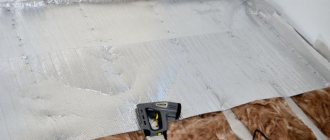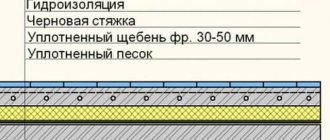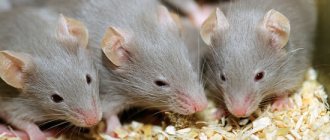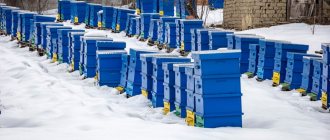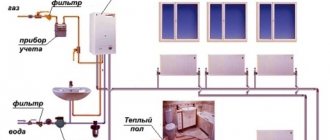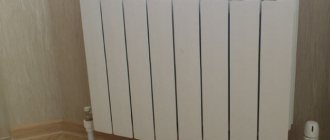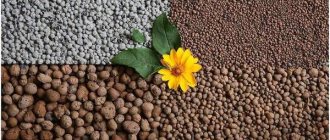Wintering bees in low temperatures allows you to extend their life by a couple of weeks and get excellent honey without any impurities. The fact is that in the wild, insects consume 3-4 kg more honey, and increased food consumption leads to a stronger filling of the intestines with feces and can cause deflation of nests. However, in order for the bees to successfully winter outside, you need to create some conditions for them, which you can learn about below.
Is it possible for bees to winter in the wild?
Wintering insects in natural conditions allows beekeepers to reduce labor costs and save money on the construction of winter huts. At the same time, for good preservation of bee colonies, you will need to pay attention to several factors:
- Quality hive . They need to be insulated, made of 2-walls or made of 60 mm thick boards. In addition, the hives should be wrapped in paper, roofing felt and covered with snow 0.5 m or more above the roof. The fact is that snow has low thermal conductivity, so it will provide an optimal microclimate in the nest and prevent sudden changes in temperature.
- Access to feed . The nest of wintering insects should have a sufficient amount (up to 30 kg) of high-quality food. To allow them to move freely under the canvas, it is worth laying slats with a cross-section of 10x10 mm across the frames in the fall.
- Snow removal . In early spring, the snow needs to be pushed away from the front wall of the hive so that it is heated by the sun's rays, and the bees can make their first flight. Warming and bright light will help them come out of dormancy, which is necessary for their earlier development and the rapid replacement of wintering bees. Simultaneously with snow removal, hay or straw should be spread in front of the hive so that insects do not die on the snow when flying around.
If all the necessary requirements are not met, the bee colony will die or emerge from wintering weakened, so in the summer they will have to be strengthened, which may be ineffective. However, even if all conditions are met, there may be large waste and weakened bees in the wild, but there is no need to worry about this. The fact is that those families that successfully survive the winter will have special energy, efficiency and gain strength faster than the family that wintered in the omshanik.
It is believed that the mobilization of their defenses and the will to survive is of great importance in the successful overwintering of bees. If insects spend the winter outside every year, they go through natural selection and can subsequently withstand bad weather. If bees winter indoors every year, they get used to optimal conditions, and their genes develop other skills and hope for help. The likelihood of their successful wintering in natural conditions is low.
Wintering in the wild in steppe zones, where there is practically no snow until January, is undesirable, since strong winds will blow away the meager covers, and bee colonies will die, unable to survive such conditions.
Checking the bees and inspecting their winter ball
The main rules for examining a ball of insects:
- The houses should be installed in such a way that even during heavy snowfall one can move freely between the hives without touching them with clothes;
- lids are removed in calm weather, trying not to make noise;
- Try to carry out the inspection in cloudy weather, since it is sunny
Providing bees with food outside
Bees in hives with food reserves of about 25 kilograms or more spend the winter outside without feeding. To fulfill this condition, you should take them out in the fall for late honey harvests, making sure that the insects do not weaken. Proper maintenance of bee colonies in winter requires the presence in each house of 2-3 frames with reserves of bee bread and several frames with honey. If there is not enough food, the families will have to be supplemented with sugar syrup or a sugar-honey mixture.
Compliance with the rules for keeping bees
Wintering conditions in the wild
You should prepare for it in the fall, before the cold weather sets in. Experienced beekeepers determine the readiness of hives to meet winter by the following actions:
- They find the uterus and determine its age. The further offspring and growth of the family depends on it.
- Check the quantity of brood available.
- They look through the honeycombs and use them to determine the bees’ suitability for wintering.
- They closely monitor the bees, identifying and removing sick insects.
When preparing for wintering bees, pay attention to the following parameters:
- Stern . The highest demands are placed on them, because the life of the whole family depends on the quality of honey. So, they take it from the main bribe, since it rarely hardens. It is important to make sure that there is enough food, since neither hunger strikes nor overfeeding of bees should be allowed.
- Frames with beebread . They don’t forget about the frames containing beebread. They are placed close to the club, preferably around the perimeter. Mostly light honey is used, since it is most suitable for winter - it crystallizes and thickens less often. Honey should not contain honeydew. To clarify this, it is sent to the laboratory.
- Disinfection . They treat the hive, destroying all pests, because they are distributors of various infectious diseases. It is carried out after the nest is fully formed and the hatching of the young is completed. All bees must undergo treatment. Hives are disinfected with steam and smoke, as they will not harm the insects. Read about how to fumigate bees using a smoke gun here.
This video explains how to prepare bees for wintering in the wild:
In general, to create conditions favorable for bees, the following recommendations are followed:
- Each family is left with 3 kg more honey than the bees that winter in the omshanik. It is important that the honey is of high quality, without honeydew impurities. If it is contained even in small quantities, the family will die.
- Creates a large frame space. The insulation must be porous, and an upper taphole is required.
- By the end of September, the insulation in the form of cotton pads is removed from the hives so that the bees do not form a club in the warmest corners of the hive. If the hive is poorly insulated, the bees will find the warmest place, which is usually located in the middle of the frames, right at the location of the brood.
- By the end of October, the canvas, which will be impregnated with propolis, is replaced with a new one. The nest is insulated with breathable, porous material. It could be:
- dry moss;
- finely chopped straw;
- hay.
- If the hive has several tiers, where two families live, they put a mesh store, and not with a closed bottom. You can even use empty housings filled with cut straw, since bees overwinter much better in them. In them, insects are engaged in raising brood much later, so there will be a lot of winter bees. Such stores are also an excellent preventive measure against varroatosis in the autumn and spring seasons. Read how to treat bees for varroa here.
- They arrange up to 5 tiers in the hive. They are insulated both from the sides and from the inside. In this case, the buildings are separated by breathable ceilings. Bees on tiers 2 and 5 are heated by neighboring colonies. They eat less food, so their intestines are not particularly full, and there is almost 2-3 times less death.
- A board with a slight slope is placed against the hive to protect the structure from cold gusty winds that can blow into the entrance. In addition, this device will be a good protection against birds.
- For better wintering, they put on the hive some kind of shirts made of cellophane film, which is excellent protection from winds and snow. You can put on this insulation as early as the end of August and not remove it until mid-May. By winter, the lower entrances are closed, and the upper ones are left open. The shirts protect families very well, which can be noted already in the summer, when the bees will collect more honey. However, it is important to ensure that moisture does not accumulate between the wall and the film, as it will gradually turn into ice.
Beginning beekeepers should know that hives should not be left over the winter if high-voltage wires pass nearby. The fact is that the electric field affects the activity of bees: the temperature in the nest rises, and they begin to consume more food, which affects their wintering.
Preparing hives for wintering
To keep the bee hive warm even in severe frosts, the wooden house in which the bees are kept should be carefully insulated. It is usually recommended to insulate the sides and bottom with polystyrene foam, pieces of felting felt, burlap, and any dense materials. The main thing is that there are no gaps left. It is recommended to raise the house above the ground in the fall, placing it on high, stable wooden pegs.
When a long-term, severe cold snap occurs, experienced beekeepers advise digging around the edges of the house with snow, but it should not be allowed to come into contact with the walls. The most destructive thing when bees winter outside is high humidity. Snow getting into the tray will cause it to melt inside; this is contraindicated. Already in February you need to dig up the house and shovel the snow away.
Be sure to leave small openings in the house for ventilation and airing. However, before doing this, it is worth checking that autumn rain and snow do not get into holes or cracks. You need to make sure that the branches of trees and bushes do not touch the walls in the wind, this will disturb the hive. You will also have to drive away annoying crows and magpies from the apiary - they are too noisy.
When wintering bees outside, the correct formation of the club and hive is extremely important: in severe frosts, an incorrectly positioned club dies of hunger if there are sufficient food supplies. The point is his low mobility.
Normally, it is formed in the lower middle (when viewed from above) of the nest, slightly closer to the entrance. During the winter it slowly rises to the honeycombs warmed by warm air above the cloud. The bees are in slight movement: like penguins, they take turns taking turns on the cold edge, some crawling into the vacated cells for compactness.
When keeping an apiary in multi-hull hives, the hive structure during wintering of bees requires overcoming a small “honey-free” barrier between the frames of the two buildings. And if they encounter a large space of a low-copper frame left when bees are wintering outside and in severe frosts, they will not be able to overcome it. And they will die of starvation, regardless of the presence of any honey reserves behind the “barrier.” Here is a video of the club's location in October.
Therefore, we try to leave only frames filled with bee food at least 2/3.
We arrange full copper ones alternately with less filled ones. The brood should be at the bottom, this is where the club will be formed. It is better to remove the ceiling pillow, then they will definitely fit underneath. We will return to the nest when cold weather sets in. Yes, for the winter the insulation should be dried, the pillows should preferably not be polished. It's all a matter of physics: if you over-insulate a nest and limit ventilation, the dew point will fall on the inside of the nest.
Condensed water means dampness in the nest, fermented honey, resulting in diarrhea and death during wintering of bees in the wild.
It is not worthwhile to use synthetic padding polyester, cotton wool and other highly efficient materials with a low heating coefficient as insulation. Wood shavings in a pillow made of cheap fabric are just right. Warming hives for the winter should not be excessive! Wintering bees outside implies a strong difference in temperature in the nest and outside. By overdoing it, we will achieve condensation of moisture from the air exhaled by wintering insects in the hive. With inevitable dampness and accompanying troubles: the wintering of the bees will be bad, they will be lucky if they don’t die...
We look through the hives so that there are no gaps. We install entry barriers to keep mice out. In the fall, we keep bees with shortened entrances: in addition to preserving heat, small openings are easier for bees to guard. Otherwise, wasps and other “honey-loving” insects like to enter the nest when it gets cold: bees are inactive and do not guard the entrances well. The construction of a hive, where the lower entrance is at the bottom level, carries additional danger.
Features and advantages of a mobile and nomadic apiary
The lower entrance may be clogged with waste. If necessary, clean the entrance with bent wire during wintering. Better yet, insert an additional subframe in preparation for it. When maintaining an apiary, at any time it is worth correlating the size of the entrance to the strength of the family, but especially in the fall and during the lean period. Beekeepers often notice subtle flaws when keeping bees and manually make improvements to the insects' house. In this video, the beekeeper, while maintaining a family in a bibox hive, showed the correction of some of its shortcomings.
It is good to cover the entrances from the wind and sun with shields made from available material. The sun during a thaw can cause the queen to lay eggs too early, especially in southern breeds. The wind blowing into the entrance means rapid and strong cooling of the nest. In addition, birds can disturb bees by tapping their beaks near the nest. And pecking the crawling insects. Wintering bees in polystyrene foam multi-hull hives is often easier than wooden hives.
There is a plus when kept in them: polystyrene foam hives retain heat better. But they are too light. It is advisable to place a brick on the roof of polystyrene foam hives, not for the winter, but for the whole season. For protection from strong winds. You can make polystyrene foam separation boards. Sometimes they are more convenient than insulating pillows when supporting families: they are easily placed in the right place. With a small volume, they protect well from the cold.
Warming the hive
When wintering bees in the wild, the beekeeper is limited in his control and assistance to the families, so “little things” should not be missed. There are no trifles, everything is important. Families in multi-hull hives should winter in 2 buildings, even weak ones: the height of the Rutov frame is not enough for high-quality wintering of bees.
It's easier for a club to move up than to move sideways!
Weak families and spare queens can be placed two in 1 hive with a blank partition between them. Hives standing on high stands should be lowered, but not to the ground, but onto low stands, for example, bricks laid flat in 1 row. Another way to preserve spare queens in multi-body hives is to place the nucleus in the upper, additional body. Having nailed the false bottom, the partition should be solid! External insulation of the hive with snow is suitable if the winter in your area is long and without thaws. To insulate the hive in this way for the winter, we cover it with spruce branches, wrap it with vapor-permeable material (not roofing felt), then sprinkle it. No knocking: any stimulation is harmful for hibernating insects.
How to arrange nests?
There are several ways to form bee nests for the winter:
- Double-sided . It is used in cases where the family is strong enough. Place 2 frames weighing 2 kg in the central part of the hive. The most complete frames weighing up to 4 kg are installed around these frames. In total, the total weight of honey should be 30 kg.
- Installation of frames using the corner method . In this case, frames are installed from the edge. First, take a frame completely filled with honey with the greatest weight. Behind it comes a smaller frame, and so on in descending order. The latest frame should not weigh less than 2.5 kg.
- Beard method . An excellent option for young families. Heavy frames completely filled with honey are fixed in the center. Already from them come the lightest frames in weight. The total amount of honey should not be less than 15 kg.
Ways to organize wintering in the wild
When wintering bees outside, it is extremely important to properly insulate the hives. There are several simple methods of insulation that were invented by experienced beekeepers. We'll look at them below.
In casings
To insulate hives, some beekeepers use covers that protect insects from gusty winds and frost. They do them as follows:
- They make casings for 2-6 hives at once. For these purposes, wooden boards are used, as well as straw, sedge, reeds and tree branches.
- Logs or logs are placed at the bottom, at a height of 10 cm from the ground, so that the casing does not rot from dampness. Then they lay insulation from natural materials and install the hives so that the entrances face in different directions. They make corridors so that the bees can fly around. The entrances are protected with overhead planks.
- The side walls and floor are fastened together. To do this, use nails and hooks. At the same time, a space is left, which is filled with insulating materials from leaves, straw, and hay. Insulation is also provided on top. The roof is placed in such a way that atmospheric moisture cannot penetrate into the hive. It is attached to the side walls of the casing. Everything is covered with roofing moisture-proof material.
- When snow falls, the casings are covered with a layer of about 50-80 cm. This will serve as additional insulation. With the onset of spring, the snow is removed and the entrances are cleared of it so that the bees can make spring flights.
If the hives are covered with covers, the bees fly around in the fall, when others no longer fly. In the spring, they behave more actively than other relatives.
After winter, the casings are thoroughly dried in the sun and stored in a warehouse.
In the trenches
Bees will survive the winter better if the hives are placed in trenches. To do this, choose a dry place, near which groundwater does not flow. A good option is the southern slope, where the soil is loosest. The hives are placed in trenches in this way:
- The hives are installed in one or two rows at once. A trench is dug about 1 m deep. The width at the bottom should be about 80 cm, and at the top – 110 cm. For one family, you need to calculate about 70 cm. You should not install more than 20 hives in one trench, but it is better to dig another one nearby.
- After the trench is dug, wait some time for the soil to dry completely. Then sand about 5 cm thick is poured onto the bottom and logs are laid.
- The hives are placed on the stacked logs and leveled in the middle. The walls should not touch the ground or neighboring hives.
- Logs are again placed on the hives, and then boards and well-dried straw, which will serve as insulation. The optimal thickness of its layer is 30 cm. Then earth about 50 cm thick is poured on top. It is slightly compacted and slightly inclined so that the water flows into a ditch that is dug nearby. It should have a depth of 25-30 cm and a width of 40-50 cm.
- To supply air into the trench, at a distance of approximately 8 m, ventilation pipes are installed. Their diameter should be about 10 cm. They try to lower the pipes deeper, but they should not come into contact with the hives. The top should be raised. A canopy is installed to protect against rain and snow. These pipes should always be open, but in low temperatures they can be closed slightly.
Some beekeepers believe that ventilation pipes in trenches are not needed, since carbon dioxide is beneficial to bees. However, water evaporation is also released in the trenches, so insects still need fresh air, for the passage of which pipes are installed.
- The entrances are completely opened, and the insulation on the sides is removed. It is enough to place a thin straw mat on top.
Approximately the same temperature is established in the trenches, but the beekeeper cannot control the condition of the bees and regulate air humidity, which is the disadvantage of this method.
The bees are dug out at the same time as in the case of wintering in omshanik. This time falls at the end of March - beginning of April. They dig trenches in the evening so that by morning the bees become calmer and can be exposed to the open air. The death toll during such wintering is small, and about 6 kg of feed is consumed per family.
Under the snow
The most natural way to overwinter bees is to cover the hives with snow. There is no need to worry about insects suffocating. You just need to leave the entrances open and make sure that they are not clogged with snow.
Snow is an excellent thermoregulator, so bees under the snow will feel no worse than in the snow. Only the front wall should be covered with a plywood sheet to create an air gap. The sides can be covered with a tarpaulin to prevent the wind from blowing into the small cracks. The big advantage of this method is that tits will not be able to eat bees under the snow.
There is also a group method of wintering bees under the snow, which involves installing hives in a dense row in a protected place, with entrances to the south.
Features of wintering in the northern regions
Experienced beekeepers organize wintering of bees in the wild in the northern regions, taking into account some nuances:
- They use thin-walled hives, but free in size. They keep bees all year round. The entrances are kept open.
- Hives are built from several buildings. Wintering is carried out in two of them, but sometimes only in one, but a magazine must be attached to it. 9 frames are installed in each case, taking into account that the upper bars should be 12 mm thinner than usual. Due to this, the uterus can move into a higher body.
- Only those families that occupy two buildings at once are allowed to spend the winter outdoors. The honey is completely removed because it may contain honeydew. In the fall, bees are given sugar syrup at the rate of up to 25 kg per family. Be sure to leave 3 frames of beebread for the winter. In the spring, food is not added to the bees, since it is still quite cold in the north.
- To prevent accumulation of moisture evaporation in the upper part of the hive, insulation made of thin foam plastic (3 cm) is laid. Holes are made in the roof to allow moisture to escape.
- To prevent the wind from blowing into the cracks, the hives are wrapped in paper that does not allow moisture to pass through, and the entrances are covered with inclined boards.
- They try to bury the hives as deep as possible in the snow.
In the harsh Siberian conditions, bees will survive in the wild only under a layer of snow.
Winter is approaching: getting ready to meet it
Preparation for winter begins with an audit of bee colonies . Its goal is to determine their condition and create suitable conditions for raising young animals in winter. The condition of the uterus is judged by the brood, namely by its quantity and quality. Families in which there are many young insects that did not take part in work tolerate wintering better, use winter food more economically, and experience little death. In the spring, such bees, which have retained their physiological youth, will be able to feed the larvae and build honeycombs.
Nest assembly
2-3 weeks after the end of the autumn bribe (you need to wait so as not to encourage theft), you should assemble a nest for wintering. It is best placed opposite the entrance in the middle of the hive. It is necessary to remove the copper-poor frames and place honeycombs half filled with honey in the center of the nest.
Along the edges of the nest you need to place frames with summer honey, then 1-2 frames with beebread - there is little honey in them, but protein food will be needed in the spring for the offspring
The amount of honey should be at least 2 kg for each street.
Having assembled the nest, you need to take care of its insulation - fill the empty spaces between the insert boards and the walls of the hive with pillows, straw mats, etc., cover the top with canvas, a pillow or a thick mat. After the bees stop flying, the entrances need to be barred to protect them from mice.
When assembling a nest for the winter, beekeepers are often faced with the presence of low-copper frames. The video below shows how to solve this problem:
Procurement of feed
It is better for the beekeeper not to save when it comes to the life of the bee colony and providing it with food for the winter. The food must be of good quality and at least 20-25 kg must be prepared for one family.
Wintering for insects will be easier if you use light honey
The darker the honey, the more minerals it contains. This is undesirable for bees, so meadow, sweet clover, clover, fruit, linden, fireweed and other light varieties should be preferred.
During the main honey collection, it is advisable to set aside 6-7 honey frames per family, taking into account the following recommendations:
- honeydew honey is contraindicated (causes diarrhea and leads to death);
- In honey from mustard and colza, crystals quickly begin to form during storage, so it is better not to leave such food for the winter.
During the wintering period, insects may need to be fed with sugar syrup or kandi.
Providing peace
It is necessary to choose the most quiet and peaceful place for wintering. At rest, bees' oxygen consumption decreases, and an increase in carbon dioxide concentration to 4% leads to a slowdown in biological processes, which allows the colony to reduce food consumption. Therefore, one of the main conditions for successful wintering of bees is providing them with rest. When conducting inspections, you must remain quiet, do not make sudden movements, and use a lamp or flashlight with a red light as lighting.
Bees perceive the red color as black, so when inspecting hives you can use red lamps without fear of being bitten - the insects will not see a person
If the bees are disturbed (by knocking on the body, loud voice, bright light, carrying hives, etc.), then their oxygen consumption increases sharply (hundreds of times!), due to the increased activity, the temperature inside the club increases, its looseness and volume increase. Insects begin to consume more food, which leads to accelerated accumulation of feces in the rectum with an increased likelihood of diarrhea and death.
Features of wintering in areas of the southern strip
The wintering of bees is most favorable in the southern regions, where the temperature in winter fluctuates in the range of -5...-3°C. In such conditions, it is better to leave the bees outdoors for the winter. However, even in this case, some nuances should be taken into account:
- In the south, winds often blow, and damp weather lasts for a long time, so it is very difficult for insects to maintain a constant temperature inside the hive. Icing of the walls often occurs. After warming, the ice melts and mold appears, which is destructive for bees. To prevent this, it is still recommended to insulate the hives with at least moisture-proof paper or roofing felt.
- When warm weather persists for a long time in the fall, the bees are forced to fly and look for honey for bribes, due to which the colonies are weakened. In order for them to survive such periods, they need to leave more food.
- It is necessary to protect bees from strong, cold and wet winds. For these purposes, the apiary is installed inside bushes or a fence is built. This step should not be neglected, given that bees tolerate frosts more easily than winds.
The disadvantage of overwintering bees in the wild in the southern regions is that, due to warm weather, they are forced to fly around in winter and early spring. Because of this, insects become weaker, and many of them do not survive until late spring.
Wintering of wild bees
In nature, no one has prepared a well-protected hive and food supplies for bee families. Therefore, wild bees have the strongest immunity - all weak individuals simply die.
How do these amazing insects manage to survive the cold and where do wild bees go in winter?
The nest of wild bees is usually a hollow tree, the upper part of which is carefully covered with propolis. All the cracks in such a hollow are carefully sealed, and the honeycombs are located in the upper part. With the onset of cold weather, bees form a club at the bottom of the nest and move upward as the temperature drops. The cold air coming from below and the honeycombs are separated by an air cushion, and propolis on the walls of the nest protects against high humidity.
Important! The survival of wild bees depends entirely on food reserves, since due to the cold air coming from below, the bees must constantly move, and more honey is required.
Checking the habitat of bees in winter
If the wintering of insects is organized in compliance with all the rules, there is no need to check and disturb the bees. In practice, most beekeepers prefer to periodically visit hibernating insects. This is done in compliance with certain rules:
- To look inside the hive, remove the lid. This work is done with great care, without making unnecessary noise.
- The weather during testing should be warm and without wind. At the same time, it may be cloudy so that the bees do not want to fly around.
This video shows how to inspect bees in winter:
In order not to open the lid of the house, you can determine what sound is coming from the hive. If it is quiet, then everything is fine in the hive, so the bees should not be disturbed.
Pros and cons of wintering in the wild
There is still controversy regarding the wintering of bees. Some believe that insects do better in natural conditions, while others prefer to keep them in a warmer environment.
The main advantages of overwintering bees in the wild are as follows:
- It is much easier for the beekeeper to prepare for winter.
- When the temperature outside is above zero, the beekeeper can organize a flight of colonies so that they are freed from their full intestines. When placing insects in an omshanik, this is much more difficult to do, since you will need to carry the hives back and forth. This is especially true in those regions where there are no constant temperatures (it jumps from negative to positive values and vice versa).
- Bees in the wild make their first flight earlier, and the queen lays eggs. They can clean up the waste themselves.
As for the minuses, they are as follows:
- Not all beekeepers have the means and capabilities to build a winter hut. In addition, you will have to drag the hives, and they are heavy, so you won’t be able to do it without an assistant. There is an alternative option - to transport the hives, but this entails the investment of additional funds.
- You will need to find materials to protect the apiary from snow drifts and cover the wall, which is located on the sunny side.
- It is necessary to consider protecting the hives from tits, since they disturb them by tapping the walls with their beaks. The bees begin to fly out, and the tits eat them.
- You should clear the snow around the hives, and also monitor the air temperature so that at the slightest warming the bees do not fly around.
- It is necessary to take care of weak families where there are only 4-6 frames. Most likely, they will not be able to survive the winter safely, so it is advisable to place them with another family.
Organizing the wintering of bees in the wild is a difficult task, on which the health of bee colonies, their ability to collect honey and the increase in offspring depend. With the correct organization of the necessary conditions, insects will be able to winter favorably in natural conditions and will delight beekeepers with excellent honey.
0
0
Copy link
Preparing families for winter
It is necessary to increase the mass of young, healthy, untrained women workers. Old bees are not needed for wintering: they won’t live to see spring anyway. Only honey is used in vain for its maintenance.
- We calculate the time until which the queen should lay eggs. We subtract a month from the date of the last flight in your area. So that freshly hatched bees have time to fly around before wintering.
- Until this time, we stimulate egg laying with incentive feeding (in the absence of bribes). When maintaining an apiary, we change queens annually or every other year: young worms last longer.
- We carry out therapeutic measures. We treat it twice against varroa, which, alas, now infects all apiaries. The first time is after the end of the main bribe: without reducing the number of parasites, it is impossible to raise full-fledged workers. The second time - after all the brood has emerged: in its absence, the effectiveness of any treatment is maximum, the entire mite is in the nest. If the apiary is infected with other diseases, we treat it. Before forming a club, it is good to give medicinal fertilizer to prevent nosematosis. A good wintering of bees is impossible if we have sick insects sucked out by mites!
- We try to keep old female workers busy with the work of processing sugar syrup, drying and repairing damaged frames. To do this, we give all the fed syrup in large doses immediately after the main feeding.
- If it turns out to be a good day for flying, and the insects are already in the club, you can try to encourage them to fly by knocking, making noise, or partially dismantling the nest. The later they fly around, the lower the fecal load during the wintering of bees.
Advantages and disadvantages of the Farrar hive
We allocate spare queens into small families. Usually there is enough time to form nuclei after the main harvest on a mature queen cell. The queens will fly around and have time to grow enough young individuals for a good wintering of the bees. Such families are inexpensive in terms of cost: there are enough workers and queen cells at this time, with minimal effort from the beekeeper. Keeping 10% of spare queens from the number of apiary colonies allows you to save a lost queen from death. Or develop it into a full-fledged unit next season, as in the video.
We begin preparations for wintering immediately after the main harvest, simultaneously with the selection of honey. Even then, sorting through the frames, we leave the brood and low-copper brown ones (I prefer their queens in the spring), form cores for spare queens, clean the folds, prepare and distribute sugar syrup. We carry out therapeutic measures.
